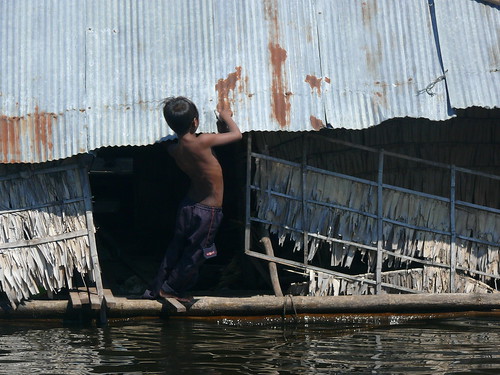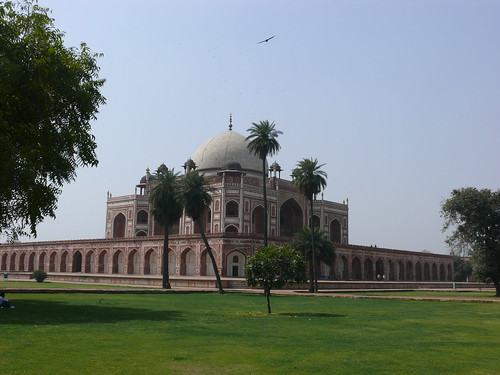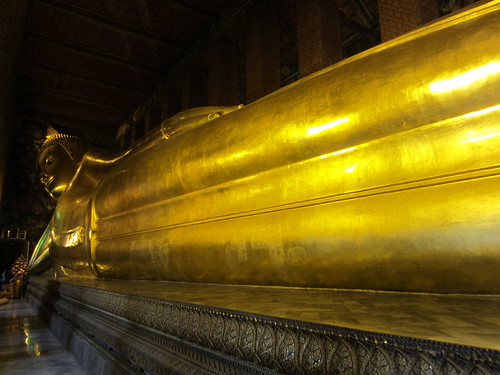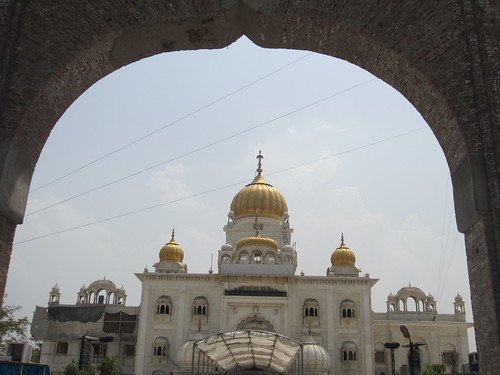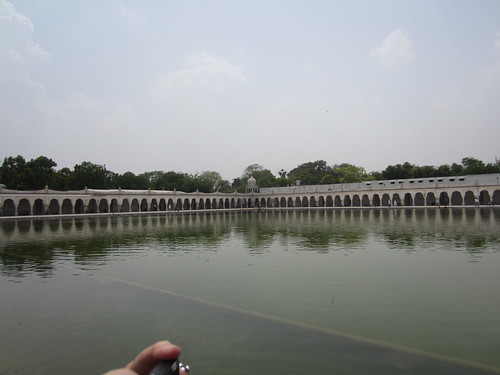One of my favorite days I spent in Cambodia was the day that I decided to take the boat between Battambang and Siem Reap. You might think that 6 hours on a boat in the river would be a little much, but I found the scenery to be gorgeous and I enjoyed passing by the fishing villages. Some of them clung precariously to the side of the river, but we also passed through at least three floating villages. I couldn't help but think how different your life experience would be if you grew up in a village that only existed on water and could actually move depending on the water level and where fish are biting. As a child you would have limited space to run around and play, but on the other hand you could handle a boat on your own quite young. One of the big amusements for the day is waving at the boats that pass by. A quick shop is located on a boat that floats from house to house. Pigpens float, bathrooms float, houses float, and fishermen definitely float.
Tuesday, May 29, 2012
Cambodian Snapshot: Boat trip up Sangker River
Location:
Cambodia
Sunday, May 27, 2012
Humayun's Tomb
While my mom was here visiting in the spring I took the opportunity of having a captive audience (really, whenever she comes to visit she just goes along with whatever crazy ideas I come up with) to go see one of the old Mughal constructions that I had been wanting to check out, Humayun's Tomb. Dating back to 1572, when you walk through the main gate and see the building through an arch, you can see how this is considered a precursor to the Taj Mahal with all of its arches and dome. The tomb is set in a lovely garden, provided an oasis of green in the center of Delhi, which also gives space for a few other "extra" tombs including that of the royal barber as well as that of the patron saint of Delhi, Nizamuddin Auliya.
Arriving early in the morning we did not have to worry about fighting a crowd, and had the freedom to explore as we wished. I appreciated that this UNESCO World Heritage Site actually provided information about the construction of the garden and the buildings, provided small tidbits of trivia that captivated my interest. Like the story behind the lovely marble lattice windows. The story goes that while Mohammed was being chased he escaped into a cave and a spider threw a web all across the entrance. When the people who were chasing him came by they assumed he wasn't in there because of the web. The windows were designed to replicate the spider's web. Walking around you begin to appreciate the symmetry of the architecture and the gardens. The attempt to create a small section of paradise.
Friday, May 25, 2012
Thailand Snapshot: Reclining Buddha
At the end of my winter break (yes, I am still posting about winter break, but I'm convinced I'm going to finish with this before I leave for the summer in a week) I spent a couple of days visiting with a friend in Bangkok. He took me out to see some of the sights one of the days and I have to say going with someone who knows a place is great! Partly because I didn't have to worry about how to get to anywhere or where I was going, but also because I had no idea of what we were going to go see so everything was a surprise. My favorite surprise was when he took me to Wat Pho. Wat Pho is known as the origin of Thai massage, but that is not what caught my attention. Under a pavillion there is an enormous reclining Buddha. And I do mean enormous. It measures 43 meters long (about 129 ft) with feet that are 4 1/2 meters (13.5 ft) alone. Once your eyes land on the graceful gold Buddha it is hard to take in anything else at the temple. As we walked around I couldn't draw my eyes away. Definitely different from what there is to see at most other temples!
Location:
Thailand
Wednesday, May 23, 2012
The Mughal Gardens

Twice now this semester I've had the opportunity to walk around what must be the most beautiful formal gardens in Delhi. I know, you're probably thinking "why is she saying that like it is unexpected?" It is not so easy to explore a garden though when they are at Rashtrapati Bhavan, the president's residence which has restricted access. The first time I went was during the month that they open the gardens up to the public. Thousands of people pour in to walk through this oasis, and when you first reach the gate it is a bit overwhelming. Luckily we were able to avoid the first hour long line because I had read the directions carefully and knew that basically we didn't want to bring anything in with us - no phone, no camera, no bag, no water, no food....so with a bit of money and my keys tucked into my pocket we skirted the bag check line and went directly to the security line. With the way that people were pushing through I was starting to worry about what we had gotten ourselves into, was it going to be this chaotic when we got into the gardens themselves? Luckily no. After the herb garden the crowds thinned out a bit as people were drawn into the beauty of the landscape that surrounded them. Some ventured through the bonsai garden, others headed straight to the fountain spraying in time to music, while others just followed the paths through the gardens themselves. There was no question that there were a lot of people there, the paths were full but moving steadily as everyone took in the sight. My favorite was the sunken circular garden which just seemed particularly peaceful.

The second time I had the opportunity to walk through the gardens it was significantly quieter. A small group of teachers was there for an official tour of the parts of the residence which are open for the public - the formal banquet hall, a ballroom, a few rooms which had been turned into museums, a courtyard with a fountain where water was spit out of a cobra's mouth, and down an unassuming white washed wall to emerge on the patio at the house end of the gardens. While the flowers weren't quite as pretty this time around the garden felt remarkable tranquil and peaceful. Organized beds laid out according to the Mughal aesthetic, cut by water courses some of which had fished shaped tiles on the bottom.

As no cameras are allowed on the ground all photos of the gardens are from the official president of India website. We were however allowed to take some pictures out front of Rashtrapati Bhavan, near the formal entrance used for offical events which overlooks a rather empty part of the city all the way to India Gate.
Labels:
india,
mughal gardens,
New Delhi,
rashtrapati bhavan,
travel
Location:
India
Sunday, May 13, 2012
Gurudwara Bangla Sahib
Earlier this week a friend and I hired a driver to take us downtown. We knew we wanted to do a bit more shopping as we will be leaving for the summer soon and it is always fun to be able to share a bit of what India has to offer when you are going home. We also had the idea of seeing something else in Delhi, only we couldn't decide what that should be. Luckily for us, we didn't have a plan and were open to unexpected ideas. As we were driving to Old Delhi we passed the walls of a massive Sikh temple. Our driver was very proud to point it out to us as a part of his faith and proposed the idea of taking us through it once we were done with our shopping. Doreen and I latched onto the idea and couldn't believe our luck. What could be better than going through a religious site with someone of that faith?
So, on our way home we stopped for a visit. Our driver was so excited about the idea of being able to share this with us and stated that we were no longer his customers but his sisters, the smile never dying from his face. So we stripped of our footwear, and waited for him to deposit our shoes in the shoe check, making sure to keep our feet in the shade so that they wouldn't get burned on the hot marble flooring. Peering around the corner to look up the stairs at the white marble building topped with enough gold to make it glitter in the sun. Through a basin of water to clean our feet, a quick wash of our hands at the faucet, up the stairs, drape the scarves we'd just bought over our hair, down the green carpeted walkway and across the door sill into the temple itself. Directly in front of the door was the focal point of the temple; a man sat reading from the Guru Granth Sahib, the Sikh holy book, under a gold pavilion while off to one side three musicians played music in the background. There was plenty of open space around this area where people were sitting and praying (reminding me of the Blue Mosque in Istanbul in some ways). We did a quick tour around the inside of the temple then excited out the back. As we walked out our driver instructed us to cup our hands to receive the food offering of karah prasad which everyone receives as they leave. We were a bit skeptical, but didn't feel we could turn down any part of the experience that he wanted to share with us. So we received our share, took a small bite and then got rid of the rest.
There were two more things to see. The sarovar, the holy lake, which was used to help treat the ill during a choloera and smallpox outbreak in 1664 when the location was just a bungalow of a raj that the eighth Sikh Guru stayed in during a visit to Delhi. The temple itself was built in 1783. The lake is considered holy and many people bathe in the water for a special blessing, a single bath house existing for the use of the women who wish to enter the water, while men and children just enter from any side of the main basin. The lake is surrounded by white marble on three sides, the last side opening to the stairs that lead up to the temple itself. On the opposite side of the temple was the langar hall, where anyone is welcome to eat. A simple meal is served to anyone who walks in regardless of their belief.
While I still may not understand much about the Sikh religion, I feel like I got a special look into the largest Sikh temple in Delhi, the Gurudwara Bangla Sahib.
So, on our way home we stopped for a visit. Our driver was so excited about the idea of being able to share this with us and stated that we were no longer his customers but his sisters, the smile never dying from his face. So we stripped of our footwear, and waited for him to deposit our shoes in the shoe check, making sure to keep our feet in the shade so that they wouldn't get burned on the hot marble flooring. Peering around the corner to look up the stairs at the white marble building topped with enough gold to make it glitter in the sun. Through a basin of water to clean our feet, a quick wash of our hands at the faucet, up the stairs, drape the scarves we'd just bought over our hair, down the green carpeted walkway and across the door sill into the temple itself. Directly in front of the door was the focal point of the temple; a man sat reading from the Guru Granth Sahib, the Sikh holy book, under a gold pavilion while off to one side three musicians played music in the background. There was plenty of open space around this area where people were sitting and praying (reminding me of the Blue Mosque in Istanbul in some ways). We did a quick tour around the inside of the temple then excited out the back. As we walked out our driver instructed us to cup our hands to receive the food offering of karah prasad which everyone receives as they leave. We were a bit skeptical, but didn't feel we could turn down any part of the experience that he wanted to share with us. So we received our share, took a small bite and then got rid of the rest.
There were two more things to see. The sarovar, the holy lake, which was used to help treat the ill during a choloera and smallpox outbreak in 1664 when the location was just a bungalow of a raj that the eighth Sikh Guru stayed in during a visit to Delhi. The temple itself was built in 1783. The lake is considered holy and many people bathe in the water for a special blessing, a single bath house existing for the use of the women who wish to enter the water, while men and children just enter from any side of the main basin. The lake is surrounded by white marble on three sides, the last side opening to the stairs that lead up to the temple itself. On the opposite side of the temple was the langar hall, where anyone is welcome to eat. A simple meal is served to anyone who walks in regardless of their belief.
While I still may not understand much about the Sikh religion, I feel like I got a special look into the largest Sikh temple in Delhi, the Gurudwara Bangla Sahib.
Labels:
Gurudwara Bangla Sahib,
india,
New Delhi,
Sikh,
temple
Location:
India
Subscribe to:
Posts (Atom)

